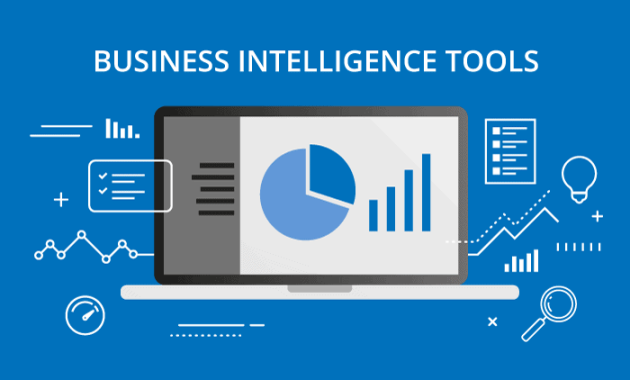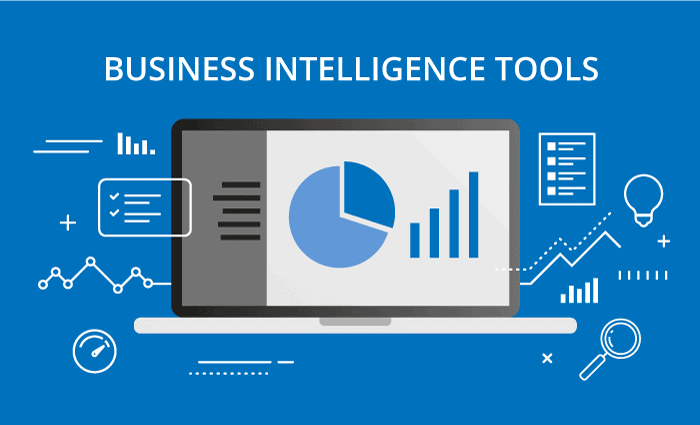
The Ultimate Guide to 8 Business Intelligence Tools For Smarter Insights
In today’s data-driven world, businesses are swimming in information. Raw data, however, is useless without the right tools to make sense of it. That’s where business intelligence (BI) tools come in. They transform complex data into actionable insights. This guide provides an in-depth look at eight of the best business intelligence tools available. We will explore their features, benefits, and ideal use cases. This will help you choose the right tools for your specific needs. This comprehensive guide to business intelligence tools will empower you to make data-driven decisions and gain a competitive edge. Let’s dive into the world of smarter insights!
Understanding the Power of Business Intelligence
Before we explore specific business intelligence tools, it’s crucial to understand the core concept. BI is about turning raw data into meaningful information. This information then drives strategic and tactical business decisions. It involves collecting, analyzing, and presenting data. The goal is to identify trends, patterns, and opportunities. This leads to improved performance and profitability.
The benefits of using business intelligence tools are numerous. These include:
- Improved Decision-Making: Data-driven insights reduce guesswork and improve decision quality.
- Enhanced Efficiency: Automation and streamlined reporting save time and resources.
- Increased Revenue: Identifying market trends and customer preferences can boost sales.
- Competitive Advantage: Understanding the market and your competitors is key to success.
Choosing the right business intelligence tools is a critical step. It depends on your specific business needs and goals. Consider factors like data sources, technical expertise, and budget. The following sections will help you evaluate and select the ideal tools.
Tool One: Tableau – The Data Visualization Leader
Tableau is a widely recognized leader in the business intelligence tools market. It is known for its user-friendly interface and powerful data visualization capabilities. Tableau allows users to create interactive dashboards and reports. These dashboards can be customized to meet specific needs. Its drag-and-drop functionality makes data exploration intuitive and accessible. Tableau supports a wide range of data sources. This includes databases, cloud services, and spreadsheets. It’s suitable for businesses of all sizes. Tableau excels in data visualization and sharing insights across teams.
Key Features:
- Interactive dashboards and visualizations
- Drag-and-drop interface
- Support for various data sources
- Data blending and integration
- Collaboration and sharing features
Ideal For: Businesses that prioritize data visualization and ease of use.
Tool Two: Microsoft Power BI – The Affordable Powerhouse
Microsoft Power BI is a comprehensive business intelligence tool. It is known for its affordability and integration with other Microsoft products. Power BI allows users to connect to various data sources. It enables them to create interactive reports and dashboards. Power BI offers robust data modeling and analysis capabilities. It also offers a free version, making it accessible to small businesses. Power BI is a good choice for businesses already using the Microsoft ecosystem. This is due to its seamless integration.
Key Features:
- Affordable pricing plans
- Integration with Microsoft products
- Data modeling and analysis
- Interactive reports and dashboards
- Mobile BI support
Ideal For: Businesses that want an affordable and integrated BI solution.
Tool Three: Qlik Sense – The Associative Analytics Pioneer
Qlik Sense is a business intelligence tool that uses an associative data model. This model allows users to explore data in new ways. Qlik Sense automatically reveals hidden connections and insights. It offers a user-friendly interface and powerful analytics capabilities. Qlik Sense supports a wide range of data sources. It is suitable for businesses of all sizes. Qlik Sense is a good choice for businesses that want to discover hidden patterns in their data.
Key Features:
- Associative data model
- User-friendly interface
- Advanced analytics capabilities
- Data storytelling features
- Mobile BI support
Ideal For: Businesses that want to explore data in a more intuitive way.
Tool Four: Sisense – The Embedded Analytics Specialist
Sisense is a business intelligence tool focused on embedded analytics. It allows businesses to integrate analytics directly into their applications. Sisense offers a powerful data engine and a user-friendly interface. It supports a wide range of data sources. It is ideal for businesses that want to provide data insights to their customers. Sisense is a good choice for businesses that need to embed analytics into their products.
Key Features:
- Embedded analytics capabilities
- Powerful data engine
- User-friendly interface
- Data modeling and preparation
- Scalability for large datasets
Ideal For: Businesses that want to embed analytics into their applications.
Tool Five: Domo – The All-in-One BI Platform
Domo is a comprehensive business intelligence tool that offers a wide range of features. It includes data integration, visualization, and collaboration tools. Domo connects to hundreds of data sources. It provides real-time data insights and automated alerts. Domo is suitable for businesses of all sizes. It is especially useful for those needing a complete BI solution.
Key Features:
- Data integration from hundreds of sources
- Real-time data insights
- Automated alerts and notifications
- Collaboration features
- Mobile BI support
Ideal For: Businesses looking for an all-in-one BI platform.
Tool Six: Looker – The Data Modeling Powerhouse
Looker is a business intelligence tool that focuses on data modeling and governance. It allows businesses to create a single source of truth for their data. Looker uses a semantic layer. This layer defines business metrics and relationships. Looker is suitable for businesses that need to ensure data consistency and accuracy. Looker is a good choice for organizations with complex data structures.
Key Features:
- Data modeling and governance
- Semantic layer
- Collaboration features
- Data exploration and analysis
- Integration with other tools
Ideal For: Businesses that need robust data modeling and governance.
Tool Seven: SAP Analytics Cloud – The Enterprise Solution
SAP Analytics Cloud is a cloud-based business intelligence tool. It offers a comprehensive suite of analytics features. SAP Analytics Cloud includes data visualization, planning, and predictive analytics. It is designed for enterprise-level businesses. It integrates seamlessly with SAP systems. This is a strong option for businesses already using SAP products. It supports a wide range of data sources. SAP Analytics Cloud offers advanced analytics capabilities.
Key Features:
- Cloud-based solution
- Data visualization, planning, and predictive analytics
- Integration with SAP systems
- Collaboration features
- Mobile BI support
Ideal For: Enterprise businesses that need advanced analytics capabilities.
Tool Eight: Yellowfin BI – The Collaborative BI Platform
Yellowfin BI is a business intelligence tool that focuses on collaboration and data storytelling. It allows users to share insights and collaborate on data analysis. Yellowfin BI offers a user-friendly interface and powerful analytics capabilities. It supports a wide range of data sources. This makes it suitable for businesses of all sizes. Yellowfin BI is a good choice for businesses that prioritize collaboration.
Key Features:
- Collaboration and data storytelling features
- User-friendly interface
- Automated insights
- Data visualization
- Mobile BI support
Ideal For: Businesses that want a collaborative BI platform.
Choosing the Right Business Intelligence Tools: A Summary
Selecting the right business intelligence tools is a critical decision. The best tool depends on your specific needs. Consider your data sources, budget, and technical expertise. Evaluate each tool based on its features and capabilities. Think about your team’s skill sets. Consider your future growth plans. Consider your long-term data strategy. By carefully evaluating these factors, you can choose the ideal business intelligence tools. These tools will transform your data into actionable insights. This will drive your business forward. Remember to prioritize your business goals. This will help you choose the best tools for success.
Implementing and Maximizing Your BI Tools
Once you’ve selected your business intelligence tools, implementation is key. Start by defining your goals and objectives. Identify your key performance indicators (KPIs). Clean and prepare your data for analysis. Train your team to use the tools effectively. Regularly review and refine your dashboards. Monitor your results. Adjust your strategies as needed. By following these steps, you can maximize the value of your business intelligence tools. You will gain a significant return on your investment. [See also: How to Choose the Right BI Tool for Your Business]
Conclusion: Smarter Insights for a Better Future
Business intelligence tools are no longer a luxury. They are a necessity for businesses that want to thrive. By leveraging these tools, you can unlock the power of your data. You can make informed decisions. You can gain a competitive edge. By understanding the features and benefits of each tool, you can make an informed choice. This will lead to smarter insights and a brighter future. Embrace the power of data! Choose the right business intelligence tools today.

